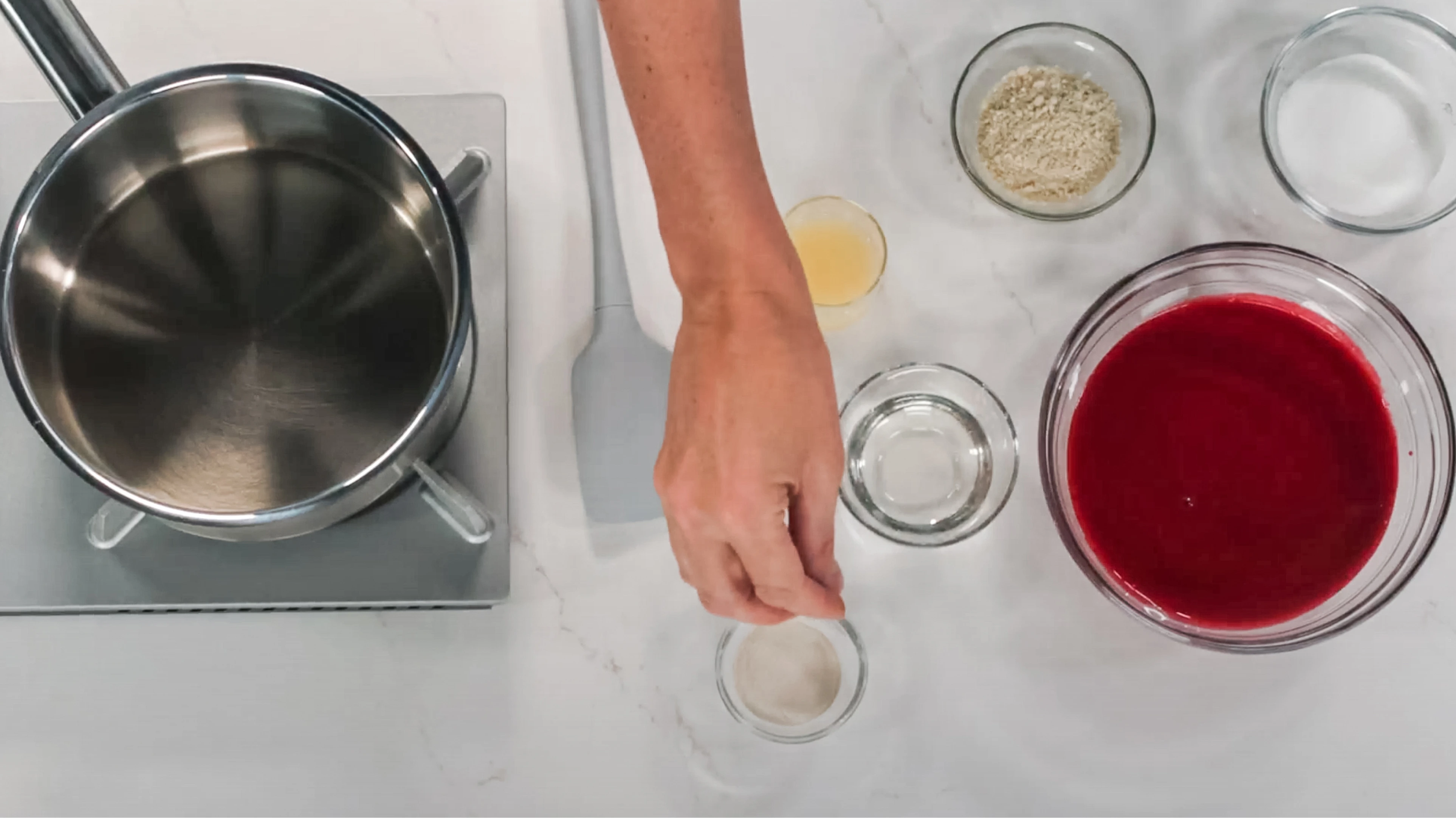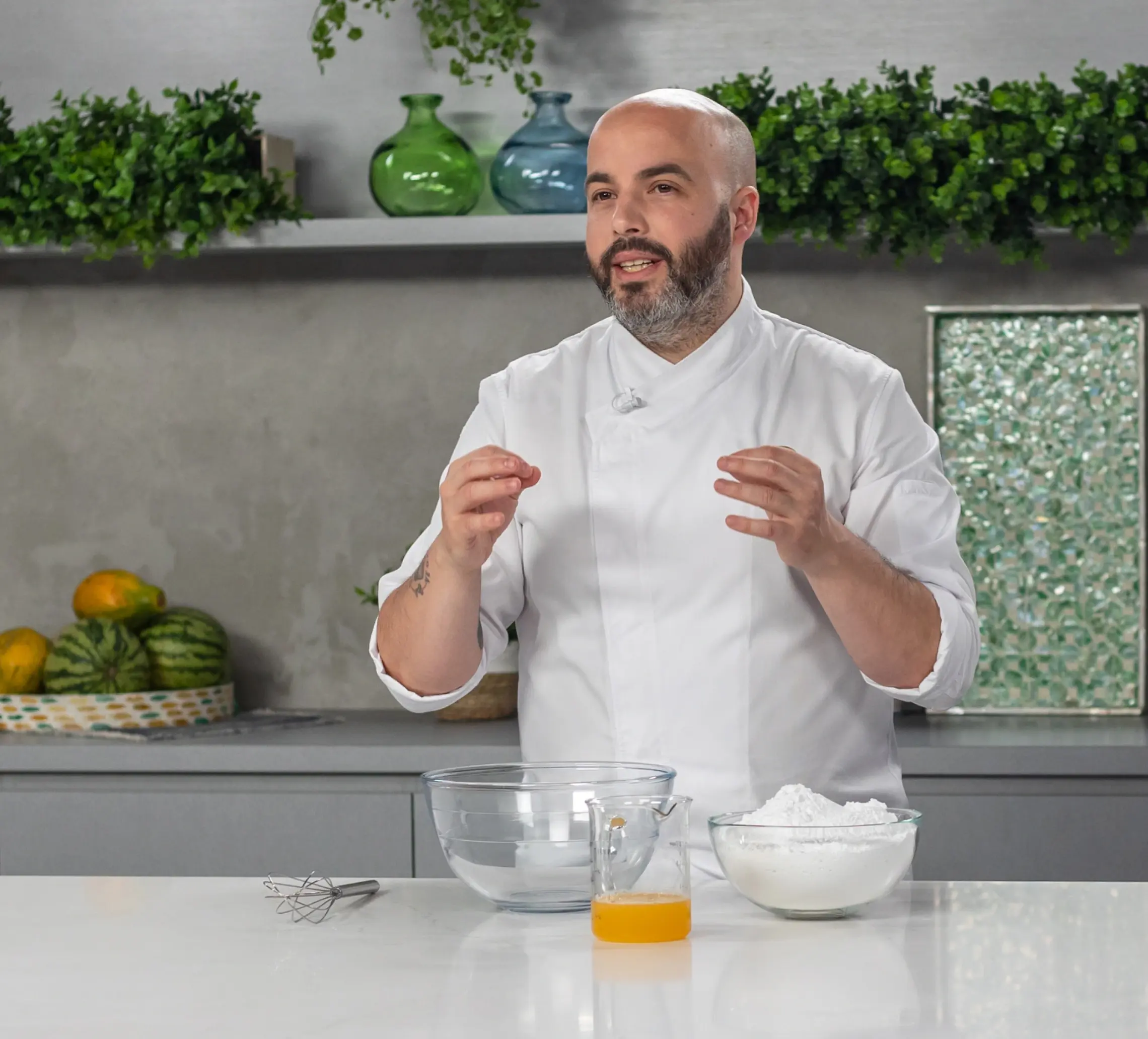Pectin and Pectin NH (Non-Heat-Reversible Pectin) are both substances used in the culinary world, particularly in the pastry industry, for thickening and setting purposes.
What Is The Difference Between Pectin And Pectin NH?
Differentiating between Pectin and Pectin NH is like mastering two key ingredients in a recipe – each plays its own part, contributing to the perfect culinary composition.

Learn From Pastry's Best
Get StartedPopular Articles

What is Feuilletine and How Does It Add Crunch to Pastries?

Invert Sugar: What It Is, How It Is Made and Used

Best Dark Chocolate Mousse Recipe: How to Make Dark Chocolate Mousse?

Finding Creativity in the Kitchen: Tips to Keep Your Pastry Game Fresh

Laminated Dough Recipe: How To Make Laminated Dough?
What Is Pectin?
Pectin, a naturally occurring carbohydrate found in fruits, plays a crucial role in the process of jelly and jam making. Extracted primarily from citrus fruits, apples, and berries, pectin acts as a gelling agent, providing the desired consistency to fruit spreads. It's a common ally for home cooks and professional bakers alike, turning fruit juices into delightful, spreadable treats.
What Is Pectin NH?
Pectin NH, also known as low-methoxyl pectin, is a type of pectin that is commonly used in the food industry, particularly in the production of jams, jellies, and fruit preserves. It differs from regular pectin in terms of its degree of esterification, which refers to the extent to which the pectin molecules are esterified or bound to methanol groups.
Key Differences
Here's a simple breakdown of the differences:
- Source:
Pectin: It is a natural substance found in fruits, especially in the peels and cores. Apples and citrus fruits are commonly rich in pectin.
Pectin NH: This is a modified form of pectin that undergoes specific treatment to make it non-heat-reversible. It is derived from citrus peels. - Thickening Properties:
Pectin: It thickens jams and jellies when combined with sugar and heated.
Pectin NH: Unlike regular pectin, it stands out for its ability to gel without extensive boiling, which helps preserve the fresh flavors and vibrant colors of fruit ingredients. - Setting Process:
Pectin: Requires heat to set. The setting process occurs during cooking and cooling.
Pectin NH: Can be melted and set multiple times without losing its gelling ability. It sets faster and more easily than regular pectin. - Applications:
Pectin: Commonly used in traditional jam and jelly recipes where heat is applied during the cooking process.
Pectin NH: Ideal for applications like glazes, mirror glazes, and fillings where a clear, shiny finish is desired, and the freshness of the fruit flavor needs to be maintained. - Versatility:
Pectin: Can be versatile but is commonly associated with traditional jam making.
Pectin NH: Offers versatility in applications beyond traditional jams, especially in recipes where a non-heat setting is preferred.
In summary, while pectin is a natural thickening agent that requires heat to set, Pectin NH is a modified form that sets without heat, providing flexibility in certain culinary applications. Depending on your specific recipe and desired outcome, you might choose one over the other.
Want to Learn More About Pastry?
Turn your pastry to success with PastryClass. Enroll new pastry skills, unleash your creativity, boost sales, enhance career opportunities, transition into an instructor role yourself, or simply discover a fresh passion. Learn with Cédric Grolet, Pierre Hermé, Ramon Moratò, Frank Haasnoot and more.

Featured Pastryclass Instructor
Johan Martin
I wanna show you how much fun you can have with mixing, rolling, shaping, baking, proofing and of course tasting!
Class AccessStay up to date with us.
Be the first to know when we launch new classes, receive pastry tips, inspiring content and exclusive offers.





















